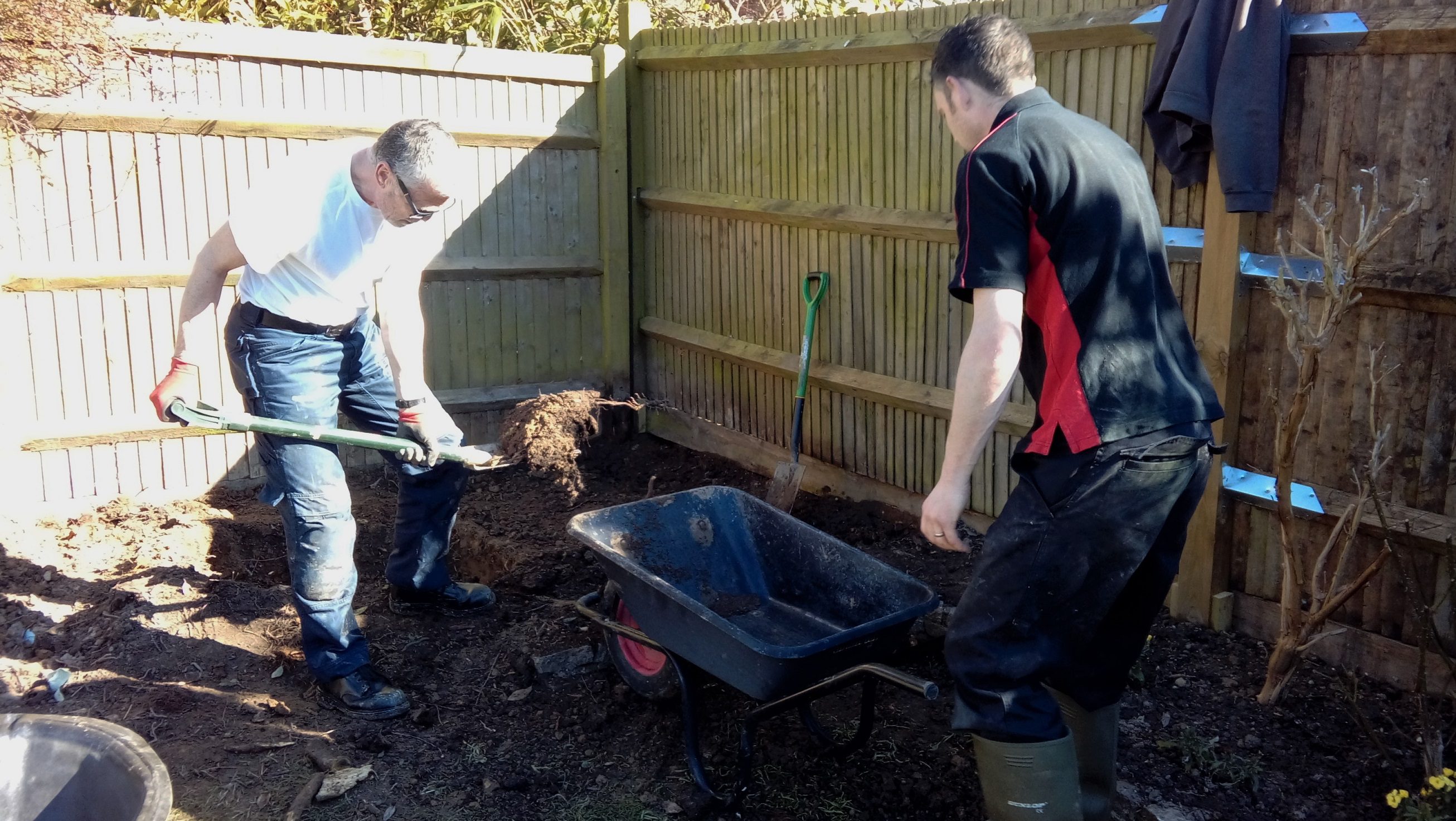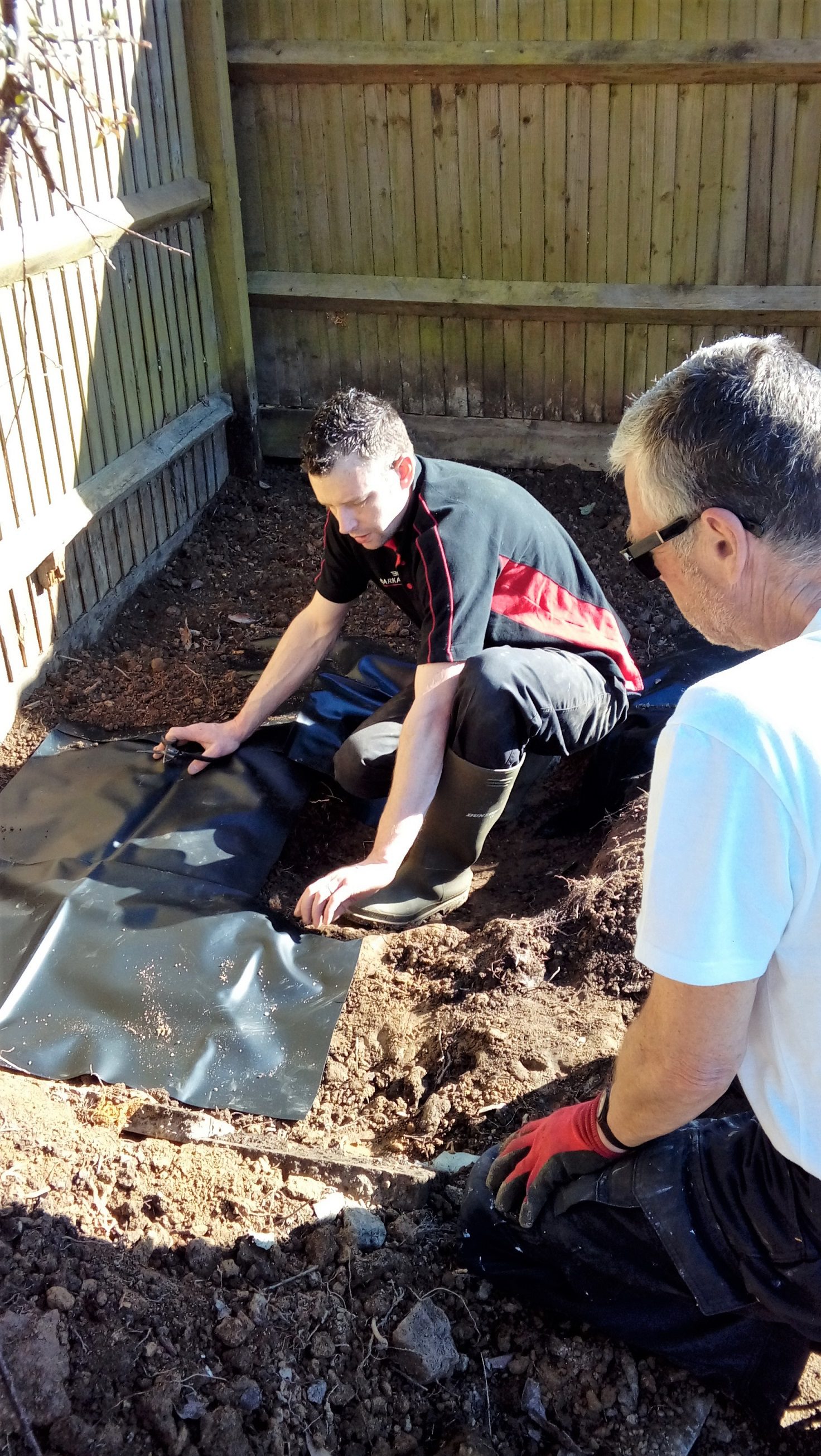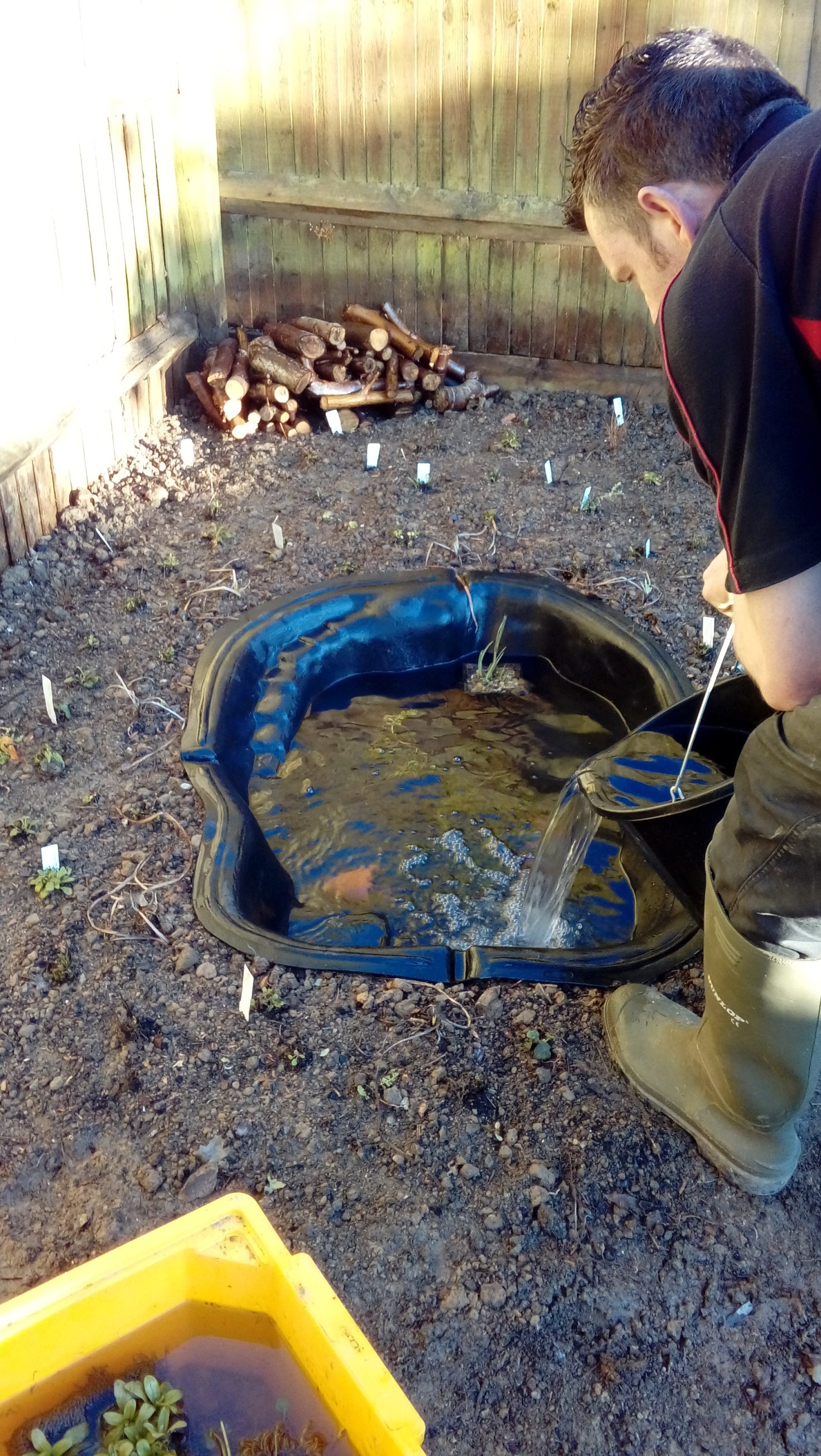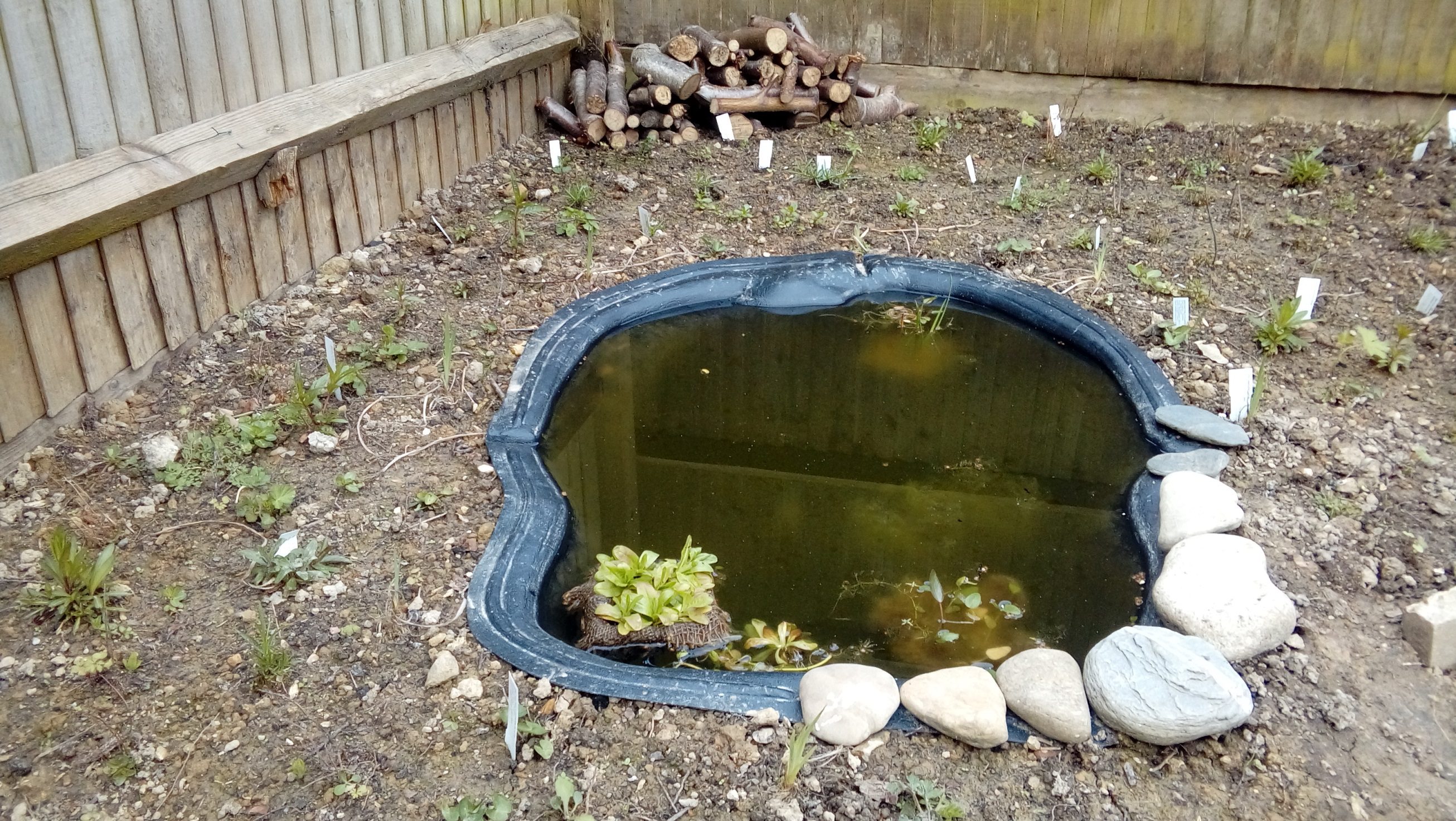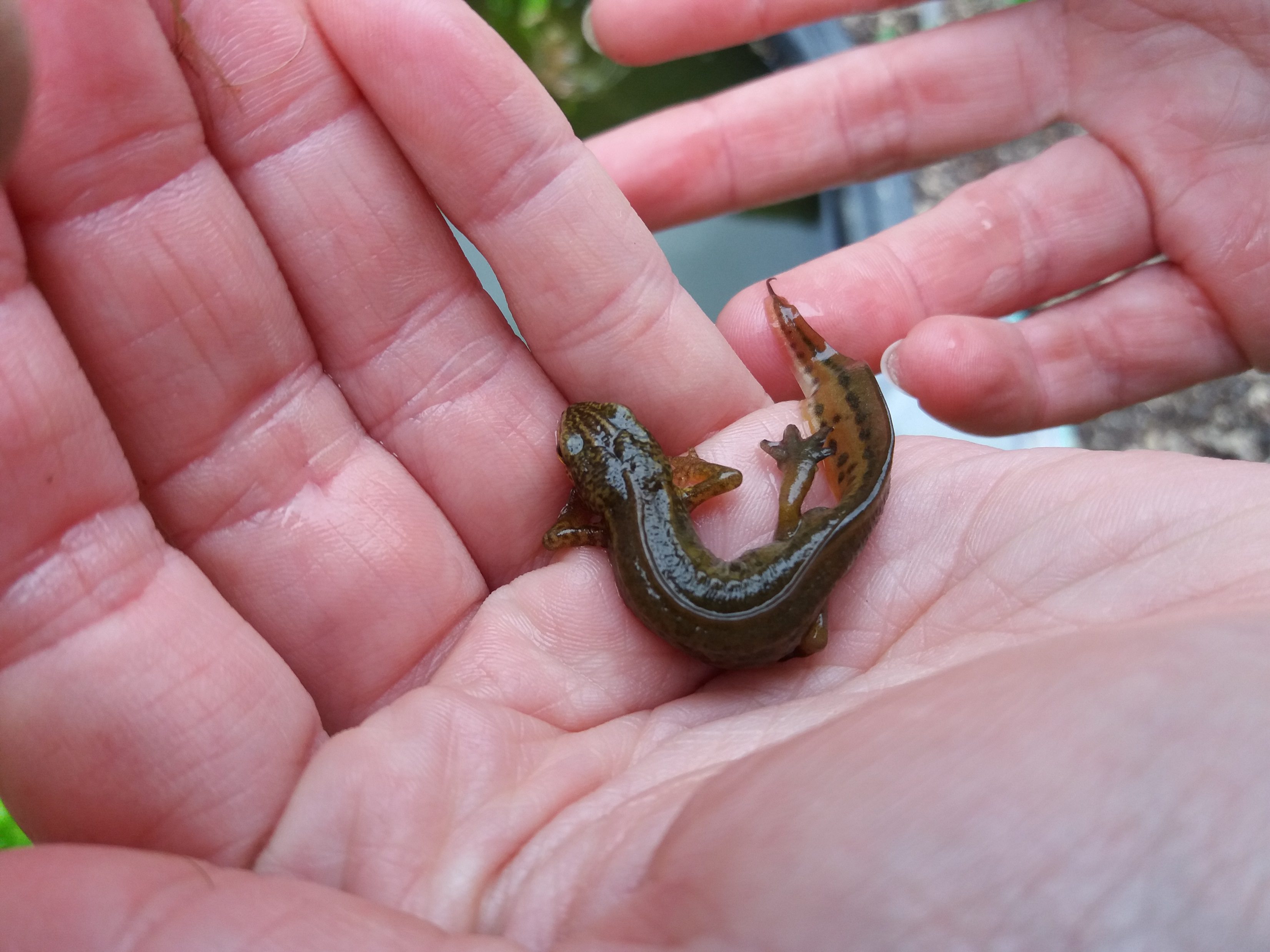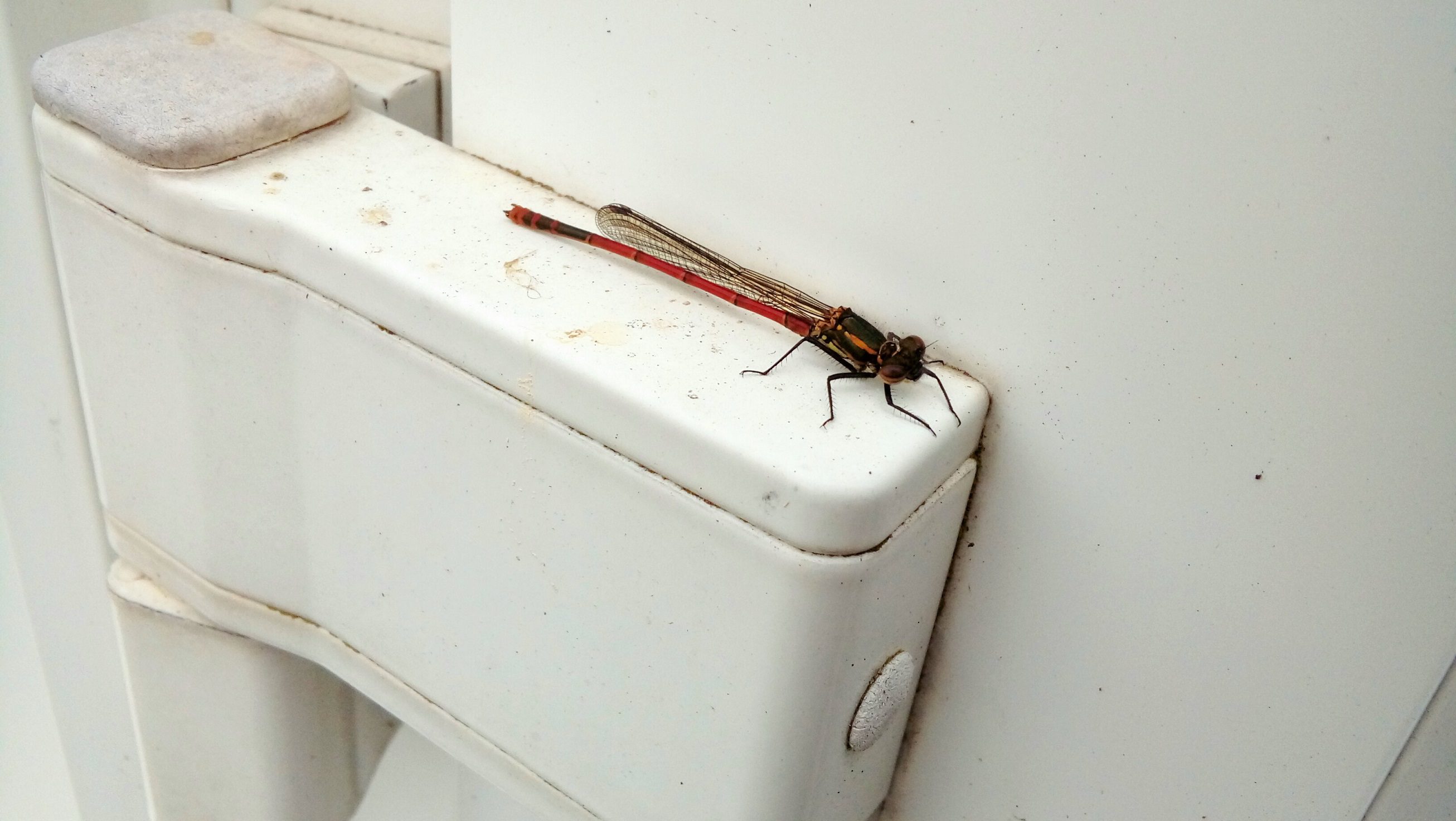Building a wildlife pond: Sarah’s Story

2nd May 2019
After buying a ‘doer-upper’ 1960s house in Cranbrook some eight months ago, my focus was always to create a wildlife-friendly garden from the sad and neglected patch. Along with a potholey lawn and vast areas of concrete hardstanding, the uninspiring garden was overgrown with bramble, cotoneaster, wild garlic, bindweed and laurel, with not a flower in sight!
But it could only get better. After months of hard-graft with help from family and friends, the wildlife friendly garden vision was starting to come to fruition. Once the laurels had been cut down and stumps removed from the top left corner, the sunniest spot in the garden, it became the obvious area for a wildlife pond.
My Christmas present from my hubby was a pre-formed pond so my plan was to incorporate this with a bog garden and habitat piles. Digging ensued over a weekend…
Word spread that I was in the process of creating a wildlife pond and a kind Kent Wildlife Trust Wild About Gardens advisor donated a few native plants such as water forget-me-not and watermint. The pond was filled with water from a neighbour’s water butt to get it started and I planted 100 native bog plug plants. To create interconnecting habitats, I dug a small hole under the fence and placed a log pile in front to encourage amphibians to pay us a visit.
Now some two months later, the bog plants are growing fast (and along with the odd tadpole or two) I have my first ‘proper’ sightseer; a male palmate newt!
The phrase, ‘build it and they will come’ has become very apt here, as most recently a large red damselfly appeared too.
As the pond matures, I am hoping that a whole variety of Odonata will use this watering hole as their home. It just shows you don’t need a huge space to create a haven for wildlife.
If you would like to follow Sarah’s example, Kent Wildlife Trust have some handy information on how to create a pond.
Popular articles
Walking the Pilgrims Way
Experience the beauty of walking across the Kent Downs AONB through the…
Inspiring Pub Walks In Kent
With spring just around the corner, now is the ideal time to…
New Whitstable to Iwade Coast Path
King Charles III England Coast Path takes a step forward in north…


